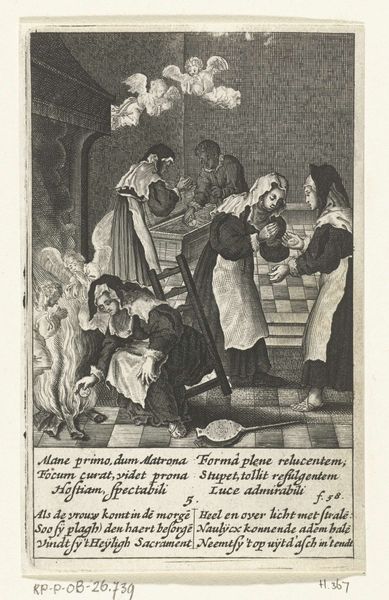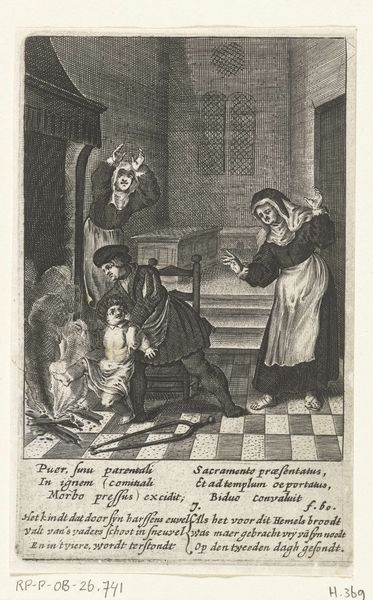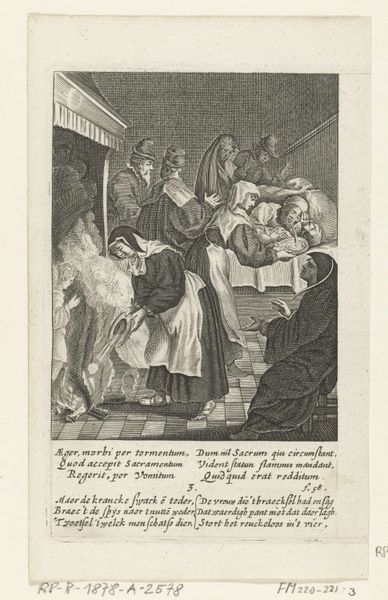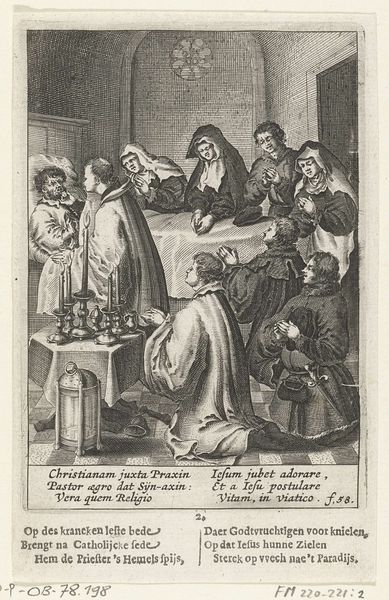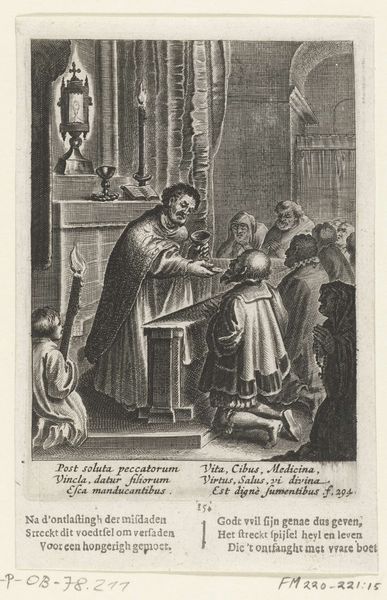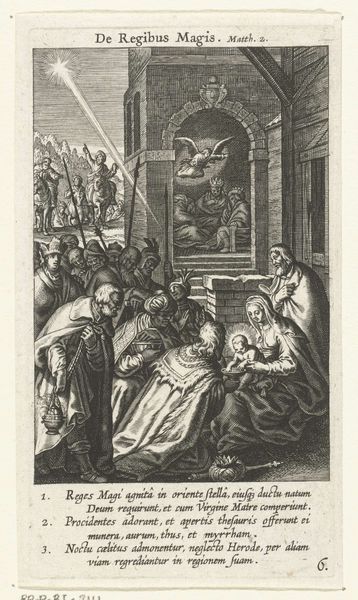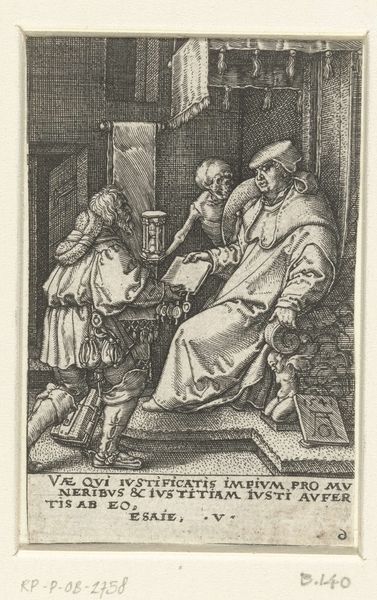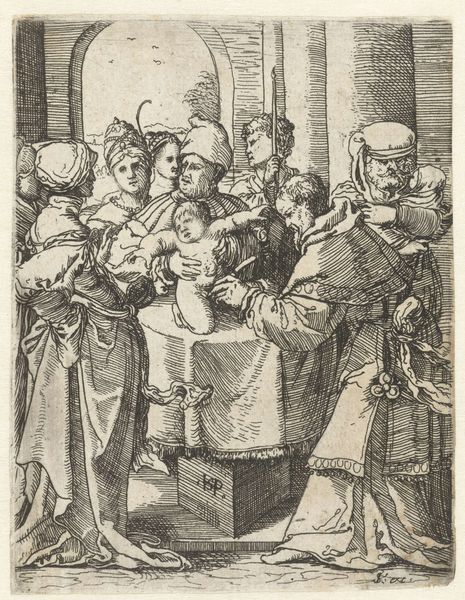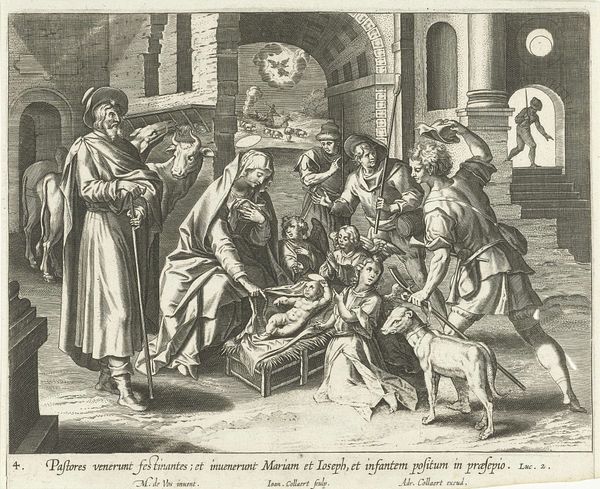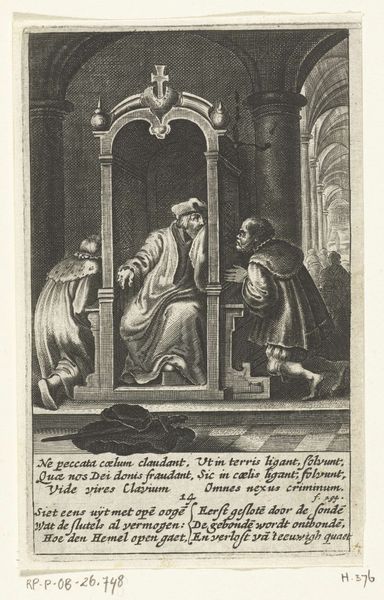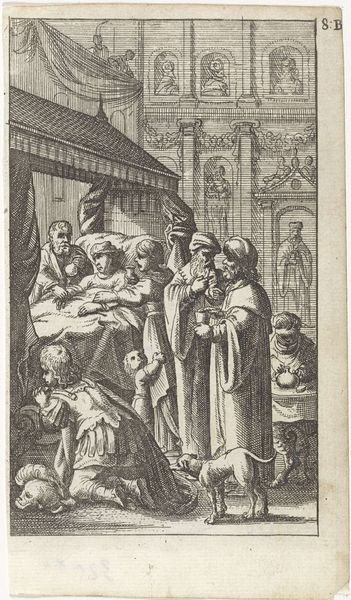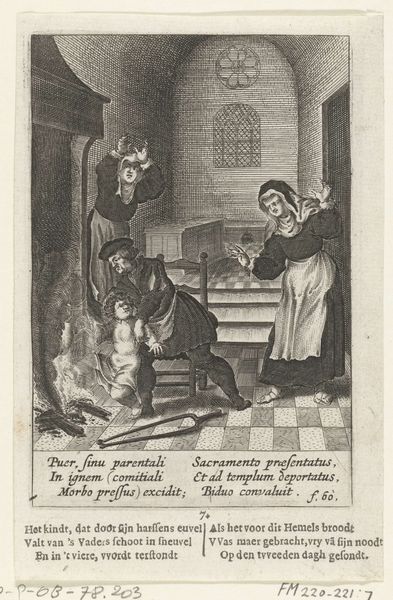
print, engraving
#
narrative-art
#
baroque
# print
#
old engraving style
#
figuration
#
genre-painting
#
engraving
Dimensions: height 116 mm, width 79 mm
Copyright: Rijks Museum: Open Domain
Curator: This engraving, created anonymously sometime between 1639 and 1699, is titled "De vrouw vindt de hostie in het vuur, 5"—or, "The woman finds the host in the fire, 5." It resides here at the Rijksmuseum. The baroque piece captures a scene of unexpected discovery. What is your immediate impression? Editor: Stark. It is immediately the tension between the shadowed foreground figures contrasted with the comparatively illuminated figures surrounding the table in the midground—not to mention those celestial cherubs and ornate window accents in the distance that command the most immediate attention. The high contrast etching is so busy. Curator: It is a study in chiaroscuro. Note how the composition draws our eye through strategic distribution of light and shadow. The woman near the fireplace sits draped in heavy dark robes, head cast downward; however, the contours of her arms are illuminated as her hands find purchase. We're meant to follow the subject's story across the image. Editor: Absolutely. Speaking of which, as an activist, the kneeling woman's posture raises certain critical questions for me. What societal circumstances might explain or motivate her positioning relative to the so-called main action in the room? Is there commentary about servitude here? Curator: Context is key here. During the Baroque period, art served as a potent tool for religious expression, particularly in the wake of the Reformation. "De vrouw vindt de hostie in het vuur, 5" encapsulates a very personal story and intimate engagement with faith. The discovery is of paramount importance. The figures respond according to their faith. It's right there in the title, by the way—"she finds." Editor: Yes, a story reflected in its style, technique, and historical context. The artist used etching techniques, the delicate play of light and shadow enhances its thematic concerns related to class and spirituality. The figures themselves, framed within this narrative of accidental holy discovery, take on different valences—a reflection of societal fault lines, perhaps. Curator: By investigating formal concerns as well as historical factors we arrive at a place where the viewing experience enriches not only what we see but how we interpret. Thank you. Editor: A place where we deepen our understanding of our present and perhaps reconsider preconceived notions.
Comments
No comments
Be the first to comment and join the conversation on the ultimate creative platform.
